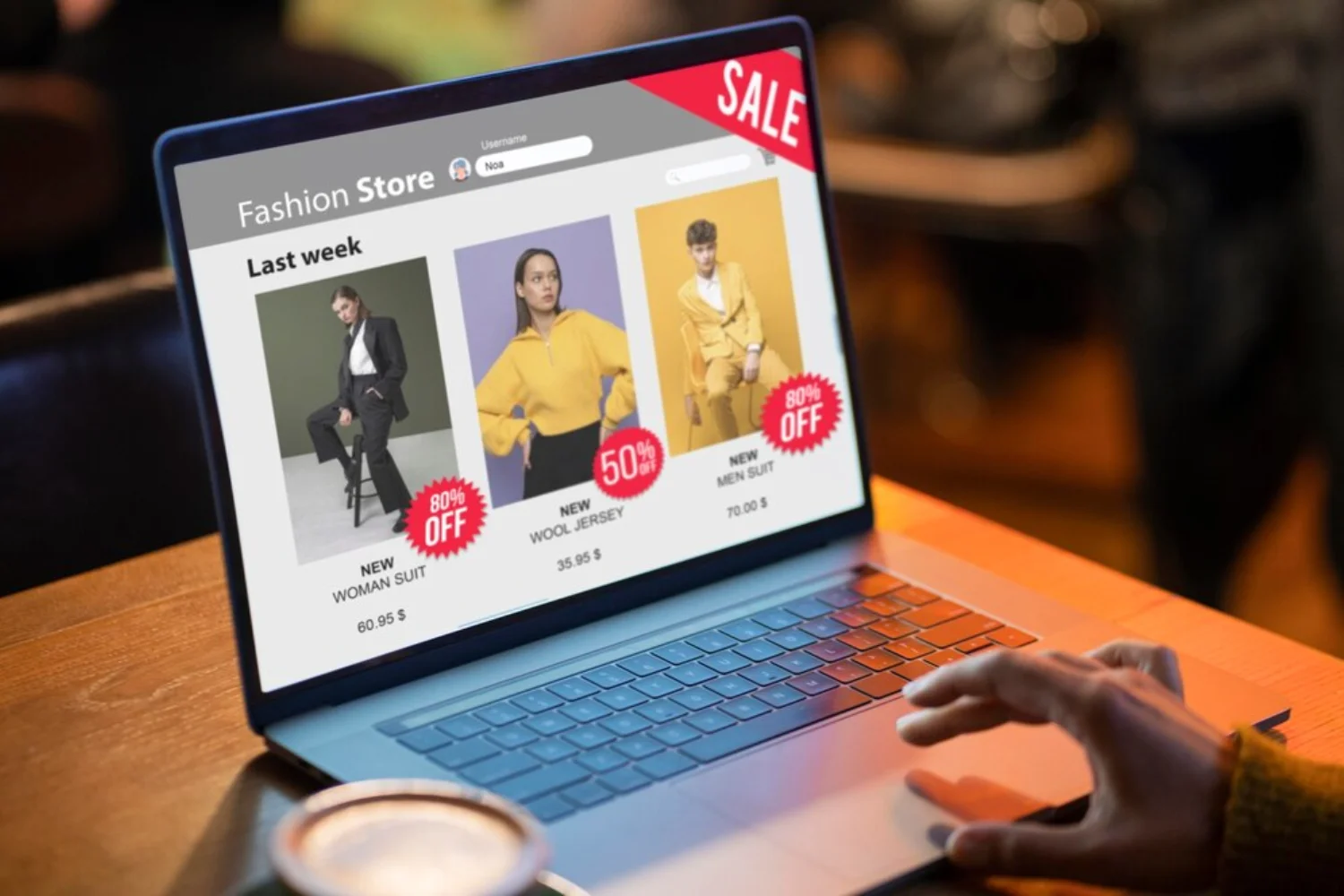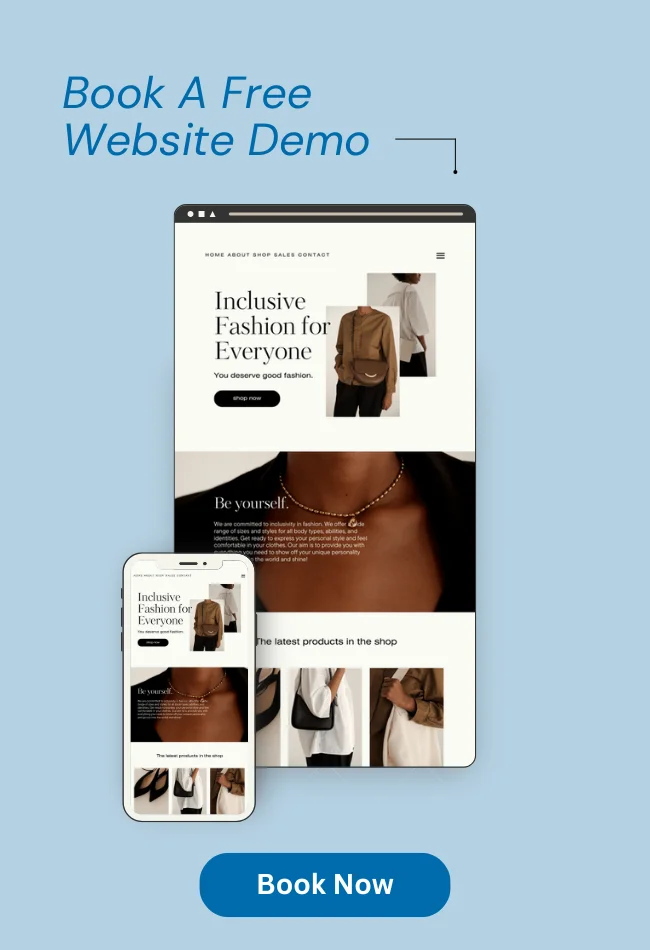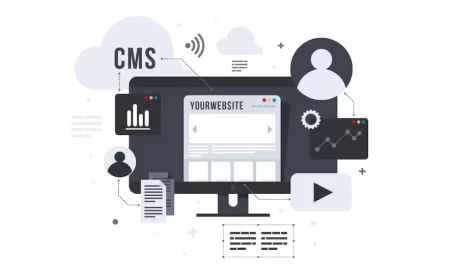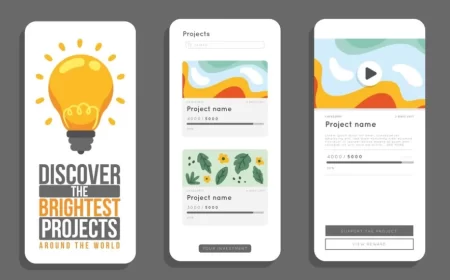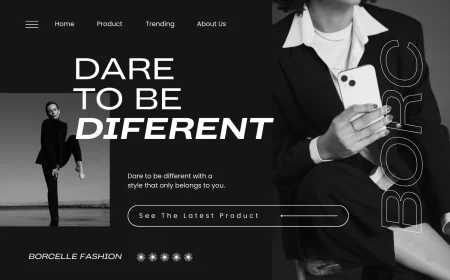In today’s hyper-connected world, a retail business’s online presence is often its most critical storefront. The best retail websites are more than just digital catalogs; they are meticulously designed e-commerce powerhouses that blend stunning aesthetics with seamless functionality, creating engaging shopping experiences that drive sales and foster customer loyalty. From global giants to niche boutiques, these websites understand that every click, scroll, and interaction contributes to the customer journey, ultimately determining the success of their online venture.
This comprehensive guide will delve into the essential characteristics that define a top-tier retail website. We’ll explore the strategic elements that make these sites impactful, highlight key design trends, provide actionable advice on building your own, and showcase inspiring examples from leading brands that master the art of online retail. Whether you’re launching a new e-commerce store or looking to optimize an existing one, understanding these best practices is crucial for converting browsers into buyers and building a thriving digital business.
Why a Superior Retail Website is Non-Negotiable Today
The shift to online shopping has accelerated, making a robust and user-friendly retail website indispensable for any business aiming to thrive. Here’s why a superior online presence is critical:
- Global Reach & Accessibility: A website allows retailers to transcend geographical boundaries, reaching customers worldwide 24/7, significantly expanding market potential.
- Enhanced Customer Experience: A well-designed site provides convenience, personalized recommendations, and a smooth shopping journey, leading to higher satisfaction and repeat business.
- Brand Building & Storytelling: The website is a powerful platform to communicate your brand’s values, unique selling propositions, and narrative through compelling visuals and engaging content.
- Data-Driven Insights: E-commerce platforms provide invaluable data on customer behavior, product popularity, and sales trends, enabling retailers to make informed business decisions.
- Cost-Effectiveness: While initial setup requires investment, online stores often have lower overheads compared to physical retail spaces, offering higher profit margins and scalability.
- Competitive Edge: In a crowded market, a superior website design and functionality can differentiate your brand, attracting and retaining customers over competitors.
Key Features of the Best Retail Websites
What sets the best retail websites apart? It’s a combination of intuitive design, powerful functionality, and a customer-centric approach.
- User-Friendly Design & Intuitive Navigation:
- Clean Layout: Uncluttered homepages and product pages that prioritize clarity and visual hierarchy.
- Simple Navigation: Clear, logical categories and subcategories, often with mega-menus for extensive product ranges.
- Prominent Search Bar: An efficient internal site search with auto-complete, filters, and sorting options is crucial for product discovery.
- High-Quality Product Presentation:
- Stunning Visuals: High-resolution images from multiple angles, zoom functionality, and lifestyle shots.
- Product Videos/3D Models: Dynamic content that allows customers to see products in action or from all perspectives.
- Detailed Descriptions: Concise yet informative product descriptions highlighting benefits, features, materials, and sizing.
- Seamless E-commerce Functionality:
- Effortless Checkout Process: A streamlined, ideally one-page, checkout with minimal required fields and clear progress indicators.
- Multiple Payment Options: Support for credit cards, digital wallets (PayPal, Apple Pay), and alternative payment methods.
- Transparent Pricing & Shipping: Clearly displayed product prices, shipping costs, and delivery estimates upfront to avoid surprises.
- Shopping Cart & Wishlist: Easy-to-use shopping cart with clear item details and a wishlist feature for saving items for later.
- Mobile Responsiveness & Performance:
- Mobile-First Design: Optimized for seamless viewing and interaction on smartphones and tablets, recognizing that a majority of traffic comes from mobile.
- Fast Loading Speed: Pages must load quickly to prevent bounce rates and improve user experience.
- Customer Engagement & Trust Building:
- Customer Reviews & Ratings: Prominently displayed social proof that builds trust and aids purchasing decisions.
- FAQ Section: Easily accessible answers to common questions about products, shipping, returns, and policies.
- Clear Return Policy: Simple and transparent return and exchange processes.
- Customer Support: Easy access to live chat, email, or phone support.
- Loyalty Programs & Promotions: Visible information on loyalty programs, coupon codes, and ongoing sales.
- Personalization & Recommendations:
- Personalized Product Suggestions: AI-driven recommendations based on browsing history, past purchases, or similar customer behavior.
- “Customers Also Bought” / “Related Products”: Cross-selling and up-selling opportunities.
- Strong Call-to-Actions (CTAs):
- Clear, prominent buttons (e.g., “Add to Cart,” “Shop Now”) that guide users towards conversion.
- SEO Optimization:
- Clean code, relevant keywords, and proper meta-information to ensure high visibility in search engine results.
Inspiring Examples: The Best Retail Websites in Action
To truly understand what makes a best retail website, let’s look at some leading examples across various industries that excel in design, functionality, and user experience.
Global E-commerce Giants & Marketplaces
- Amazon: The undisputed leader, known for its vast selection, personalized recommendations, one-click ordering, and efficient logistics. Its design prioritizes product discovery and convenience.
- eBay: Excels in its auction model and robust marketplace for new and secondhand goods, supported by a strong community and secure transaction processes.
- Walmart: Offers a seamless omnichannel experience, allowing customers to buy online and pick up in-store, with a user-friendly interface for its massive product range.
- ASOS: A prominent international fashion retailer known for its extensive product catalog, diverse models, seamless filters, and strong mobile experience.
- Etsy: A unique marketplace for handcrafted and vintage items, empowering artisans and small businesses with a charming, community-driven platform.
Fashion & Apparel
- Nike: Blends visual appeal with high usability, featuring dynamic product imagery, personalized shopping experiences, and a strong brand narrative.
- Allbirds: Known for its sustainable footwear, Allbirds’ website is clean, friendly, and effectively builds trust through transparent messaging and a focus on natural materials.
- Madewell: Features a clean design with lifestyle imagery that showcases their apparel, focusing on a cohesive brand aesthetic and easy navigation.
- Everlane: Emphasizes radical transparency in pricing and sourcing, with a minimalist website design that highlights product quality and ethical practices.
- ASOS: (Reiterated for its strong fashion focus) Its vast selection, trend-driven content, and robust filtering make it a go-to for fashion enthusiasts.
Home Goods & Furniture
- Burrow: Offers a new approach to furniture with modular items, and its website reflects this with a clean, modern design, clear product explanations, and helpful how-to videos.
- Solo Stove: Effectively communicates the durability and ease of use of its outdoor products through engaging how-to videos, illustrations, and customer testimonials.
- Vivi et Margot: A French homeware brand whose website is rich with lifestyle photography, creating an aspirational and immersive brand experience that resonates with its audience.
Beauty & Wellness
- Glossier: Known for its minimalist aesthetic and community-driven approach, Glossier’s website is clean, user-friendly, and allows customers to easily find products with a focus on natural beauty.
- Aesop: Provides a luxurious and immersive online shopping experience, capturing the essence of premium skincare with sophisticated design and detailed product information.
- Bite Toothpaste Bits: A beautifully designed homepage that immediately grabs visitors’ attention, effectively driving customers to purchase their sustainable oral care products.
- Welly: Positions itself as a fun first-aid brand, with a colorful, bold website that reflects its aesthetic and features clear calls-to-action.
Specialized Retailers & Unique Products
- Apple: Masters high-quality product photography and a highly organized site that prevents users from getting lost despite a vast product range.
- LARQ: Effectively drives customers to purchase their self-cleaning water bottles through a clean design and a focus on their “Bottle Movement” mission.
- Pure Cycles: Uses a simple layout that clearly communicates brand value and showcases best-selling bikes, with product pages offering an in-person shopping experience online.
- Verve Coffee Roasters: Builds trust with customer reviews and uses evocative language paired with stylish photography to keep customers engaged.
- Finn (Pet Wellness): Attracts pet owners with large photos of happy dogs and uses simple fonts, high contrast, and clear hierarchy to direct visitors to products or quizzes.
- Hardgraft: Builds trust for luxury goods with a rugged, earthy aesthetic, displaying brand mission and values, and featuring crisp, bold images of products.
- Topo Designs: Uses images that resonate with its target market of outdoor enthusiasts, with unique backgrounds and clear communication of sales and shipping incentives.
- KETNIPZ: Reflects a quirky brand personality with bright colors, unique fonts, and seasonal updates, showcasing how an Instagram comic can become a successful brand empire.
- Uppercase magazine: A Shopify store that combines interesting articles and photos focused on craft, fashion, illustration, and design, showing how content can drive retail.
- Cocofloss: A subscription-based business whose website effectively sells oral care products with new flavors, colors, and designs to keep the experience interesting.
- Pot Gang: A UK-based subscription box that sends everything needed to grow herbs and vegetables, with a website that simplifies gardening for beginners.
- United By Blue: An apparel and home goods company that integrates sustainability into its brand, with a website that highlights its mission to remove trash from oceans.
- Camille Brinch: A jewelry business whose Shopify store is inviting, with large lifestyle images and video content that helps visitors get to know the brand and founder’s story.
These examples underscore that the best retail websites prioritize the customer journey, from initial discovery to post-purchase engagement, all while maintaining a strong and authentic brand identity.
Tools for Building Your Best Retail Website
Creating a successful retail website is more accessible than ever, thanks to powerful e-commerce platforms and design tools.
- E-commerce Platforms:
- Shopify: Highly popular for its ease of use, extensive app store, and scalability, suitable for businesses of all sizes.
- Wix: Offers a user-friendly drag-and-drop builder with robust e-commerce features and customizable templates.
- Squarespace: Known for its beautiful, design-forward templates, ideal for brands emphasizing visual aesthetics.
- BigCommerce: A robust platform for larger businesses needing advanced features, scalability, and integration capabilities.
- WooCommerce: A flexible, open-source e-commerce plugin for WordPress, offering immense customization for those familiar with WordPress.
- Design & Optimization Tools:
- High-Resolution Photography Equipment: Invest in a good camera or hire a professional photographer for stunning product shots.
- Product Video Software: Tools for creating engaging product demonstrations.
- Image Optimization Tools: Ensure images load quickly without sacrificing quality (e.g., TinyPNG, Compressor.io).
- SEO Tools (e.g., Google Analytics, SEMrush, Ahrefs): For keyword research, site performance monitoring, and competitive analysis.
- A/B Testing Tools: To continuously optimize elements like CTAs, layouts, and product pages for better conversion rates.
- Live Chat & Customer Support Software: For real-time customer assistance.
- Email Marketing Platforms (e.g., Mailchimp, Klaviyo): For abandoned cart recovery, promotional emails, and customer segmentation.
- Review & Rating Platforms (e.g., Yotpo, Loox): To collect and display customer testimonials.
Frequently Asked Questions (FAQs)
Q1: What is the most crucial feature for a retail website?
The most crucial feature is a seamless and intuitive user experience (UX), particularly a streamlined checkout process combined with high-quality product presentation. If customers can’t easily find products, learn about them, and complete a purchase, other features become irrelevant.
Q2: How important is mobile responsiveness for a retail website?
Mobile responsiveness is critically important. A significant majority of online shopping now happens on mobile devices. A website that doesn’t adapt well to smaller screens will frustrate users, lead to high bounce rates, and result in lost sales. Mobile-first design is a best practice.
Q3: Should I include customer reviews on my retail website?
Absolutely. Customer reviews and ratings are a powerful form of social proof. They build trust, help potential buyers make informed decisions, and can significantly increase conversion rates. Actively encourage and display reviews.
Q4: How can I make my retail website trustworthy for new customers?
To build trust, ensure your website has:
- Clear and transparent policies (shipping, returns, privacy).
- Secure payment gateways (HTTPS, visible trust badges).
- Customer reviews and testimonials.
- Easy-to-find contact information.
- A professional and polished design.
- An “About Us” page that tells your brand story and values.
Q5: What are common reasons for shopping cart abandonment, and how can a website prevent it?
Common reasons for abandonment include unexpected shipping costs, a complicated checkout process, forced account creation, and lack of trust. To prevent it, offer:
- Transparent pricing (including shipping) upfront.
- A guest checkout option.
- A simple, multi-step or one-page checkout.
- Multiple trusted payment options.
- Clear security assurances.
- Abandoned cart email reminders.
Q6: How do product videos impact sales on a retail website?
Product videos can significantly impact sales by providing a more immersive and detailed view of the product than static images. They help customers visualize the product in use, understand its features, and build confidence in their purchase, leading to higher conversion rates and fewer returns.
Q7: What are the latest design trends for retail websites?
Current retail website design trends include:
- Mobile-first design: Prioritizing the mobile experience.
- Advanced personalization: AI-driven product recommendations and tailored content.
- Interactive product visualization: 3D models, AR/VR experiences.
- Micro-animations and micro-interactions: Subtle animations for enhanced user feedback.
- Enhanced checkout experiences: Streamlined, intuitive, and secure payment flows.
- Sustainable and ethical messaging: Integrating brand values into the design and content.
- Neo-brutalism (for niche brands): Raw, unpolished, and strong visual contrasts for a unique aesthetic.

